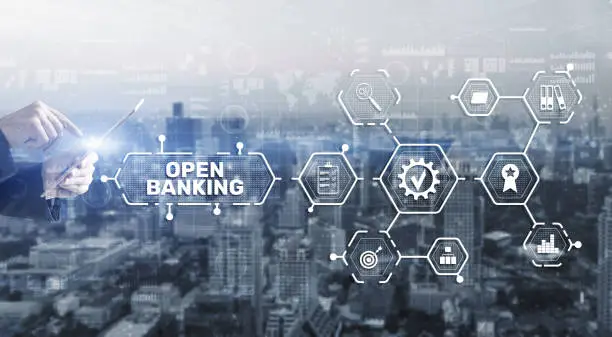In the world of global finance, acronyms and abbreviations are commonplace, often leaving individuals puzzled about their meanings and implications. One such acronym is IOCMKT. For those unacquainted with this term, it stands for International Open Market Transactions. This article aims to demystify IOCMKT, explaining its full form, significance, and the role it plays in the global economic landscape. By the end of this article, you will have a comprehensive understanding of IOCMKT and its impact on international trade and finance.
What is IOCMKT?
IOCMKT, or International Open Market Transactions, refers to the buying and selling of goods, services, and financial instruments between countries in an open market environment. These transactions are conducted without significant government restrictions, allowing for free-market dynamics to dictate prices and trade flows. IOCMKT plays a crucial role in facilitating global commerce, investment, and economic integration.
The Importance of International Open Market Transactions
1. Economic Growth and Development
IOCMKT is pivotal for economic growth and development. By enabling countries to trade freely, these transactions help allocate resources more efficiently, promote competition, and drive innovation. Nations can specialize in producing goods and services where they have a comparative advantage, leading to increased productivity and economic prosperity.
2. Price Stability
International Open Market Transactions contribute to price stability by ensuring that goods and services are traded at market-determined prices. This helps prevent artificial price distortions caused by government interventions such as tariffs, quotas, or subsidies. As a result, consumers and businesses benefit from fair pricing and greater predictability in the market.
3. Enhanced Consumer Choice
One of the significant advantages of IOCMKT is the expanded range of goods and services available to consumers. By participating in international trade, countries can offer products that are not produced domestically, providing consumers with a broader selection and access to higher quality or more affordable options.
4. Investment Opportunities
IOCMKT facilitates cross-border investments, allowing capital to flow to regions where it can be most effectively utilized. This leads to better capital allocation, higher returns on investment, and the development of new markets. For investors, it opens up opportunities to diversify their portfolios and mitigate risks associated with domestic market fluctuations.
Key Components of IOCMKT
1. Trade of Goods and Services
The most visible component of IOCMKT is the trade of physical goods and services. This includes everything from raw materials and manufactured products to services like tourism, education, and financial consulting. Trade agreements and international partnerships play a significant role in facilitating these transactions.
2. Financial Markets
Financial markets are a critical aspect of IOCMKT, encompassing the exchange of stocks, bonds, currencies, and other financial instruments. International financial markets enable countries to access capital, hedge risks, and invest in foreign assets. They also support the functioning of global supply chains by providing the necessary liquidity and credit facilities.
3. Foreign Direct Investment (FDI)
Foreign Direct Investment is another vital component of IOCMKT. FDI involves a company or individual from one country making a physical investment in building a factory, acquiring a business, or establishing operations in another country. FDI is essential for transferring technology, creating jobs, and fostering economic growth in the host country.
4. Regulatory Frameworks
Effective regulatory frameworks are crucial for the smooth functioning of IOCMKT. International organizations such as the World Trade Organization (WTO), International Monetary Fund (IMF), and various regional trade agreements establish rules and guidelines to ensure fair and transparent trade practices. These regulations help resolve disputes, prevent unfair competition, and promote economic stability.
Challenges in International Open Market Transactions
Despite the benefits, IOCMKT faces several challenges that can hinder its effectiveness:
1. Trade Barriers
While the aim of IOCMKT is to promote free trade, various barriers such as tariffs, quotas, and non-tariff measures can still restrict the flow of goods and services. These barriers often arise due to protectionist policies aimed at safeguarding domestic industries.
2. Exchange Rate Volatility
Fluctuations in exchange rates can create uncertainty and risks for businesses engaged in international trade. Exchange rate volatility can affect the competitiveness of exports and imports, impacting profit margins and financial stability.
3. Political and Economic Instability
Political and economic instability in trading partner countries can disrupt IOCMKT. Factors such as changes in government, economic sanctions, and social unrest can lead to unpredictability in trade relations and investment climates.
4. Compliance and Regulatory Differences
Navigating different regulatory environments and compliance requirements can be challenging for businesses engaged in IOCMKT. Variations in legal frameworks, standards, and enforcement mechanisms can create complexities and increase the cost of doing business internationally.
The Future of IOCMKT
As globalization continues to advance, the significance of International Open Market Transactions is expected to grow. Technological advancements, such as digital trade platforms and blockchain, are likely to enhance the efficiency and transparency of these transactions. Additionally, increasing economic interdependence among nations will necessitate stronger collaboration and alignment of trade policies to address global challenges.
Conclusion
International Open Market Transactions (IOCMKT) play a fundamental role in shaping the global economy. By facilitating free trade, investment, and financial exchanges, IOCMKT drives economic growth, enhances consumer choice, and promotes efficiency. However, navigating the challenges of trade barriers, exchange rate volatility, political instability, and regulatory differences requires careful consideration and strategic planning. As the world becomes more interconnected, the importance of IOCMKT in fostering economic integration and development will only continue to rise.
7 Frequently Asked Questions About IOCMKT
1. What does IOCMKT stand for?
IOCMKT stands for International Open Market Transactions, referring to the buying and selling of goods, services, and financial instruments between countries in an open market environment.
2. Why are International Open Market Transactions important?
IOCMKT is important for promoting economic growth, price stability, consumer choice, and investment opportunities. It facilitates efficient resource allocation and drives innovation.
3. What are the key components of IOCMKT?
The key components include the trade of goods and services, financial markets, foreign direct investment (FDI), and regulatory frameworks that govern international trade and finance.
4. What challenges does IOCMKT face?
Challenges include trade barriers, exchange rate volatility, political and economic instability, and compliance with varying regulatory environments.
5. How do trade barriers affect IOCMKT?
Trade barriers, such as tariffs and quotas, restrict the free flow of goods and services, potentially leading to inefficiencies and reduced economic benefits from international trade.
6. What role do regulatory frameworks play in IOCMKT?
Regulatory frameworks ensure fair and transparent trade practices, resolve disputes, prevent unfair competition, and promote economic stability, facilitating smooth international transactions.
7. What is the future of IOCMKT?
The future of IOCMKT will be shaped by technological advancements, increased economic interdependence, and stronger collaboration among nations to address global challenges and enhance trade efficiency.
In summary, IOCMKT is a critical component of the global economic system, enabling countries to engage in mutually beneficial trade and investment. Understanding its dynamics and challenges is essential for navigating the complexities of international commerce and maximizing its potential benefits.











